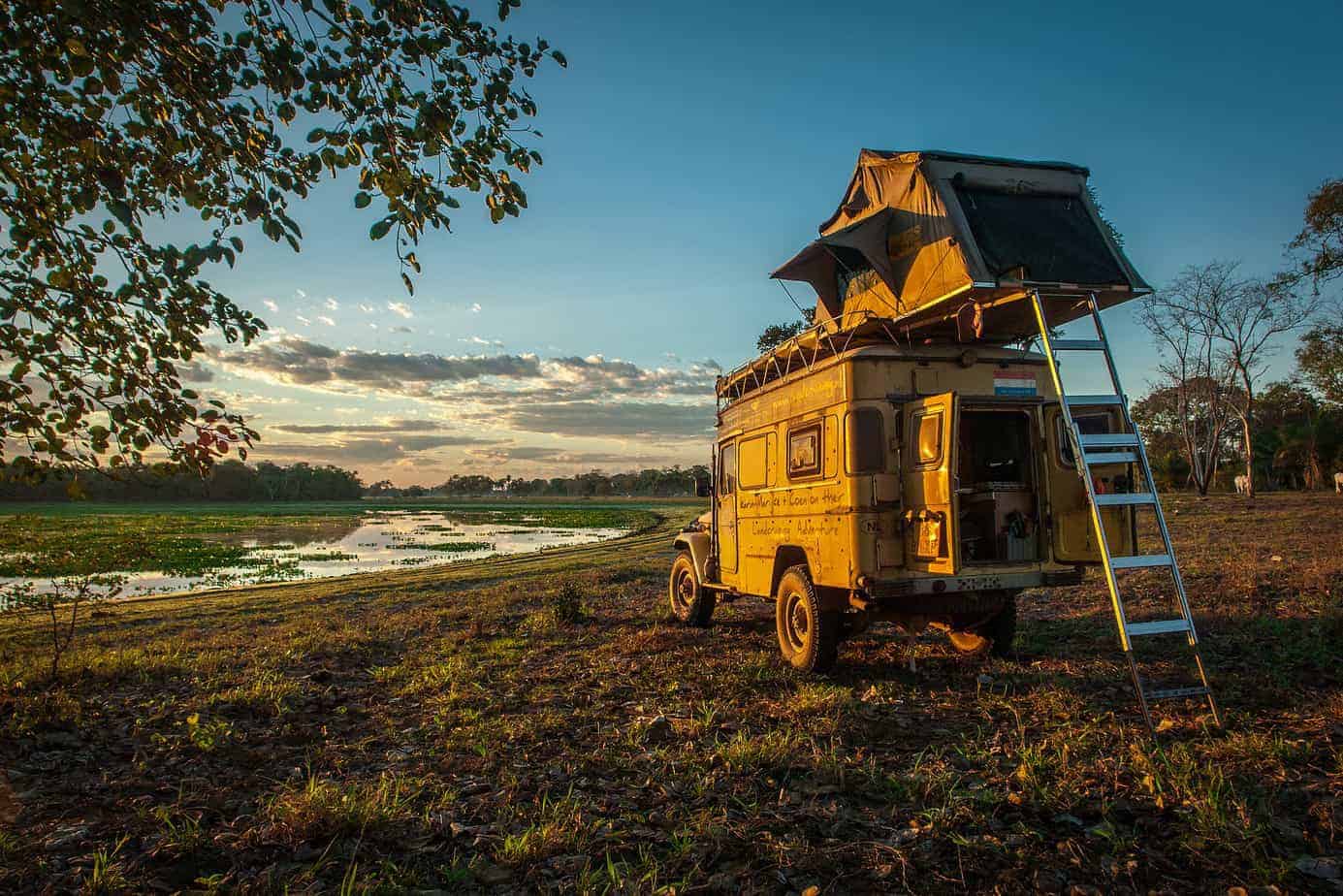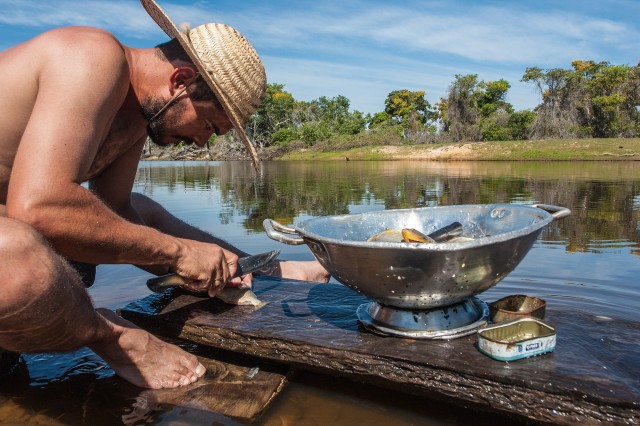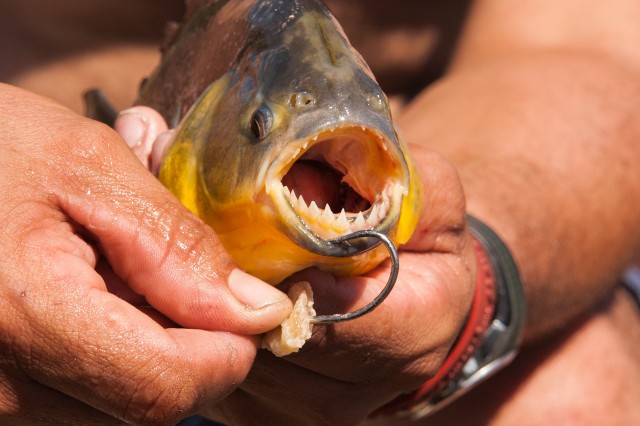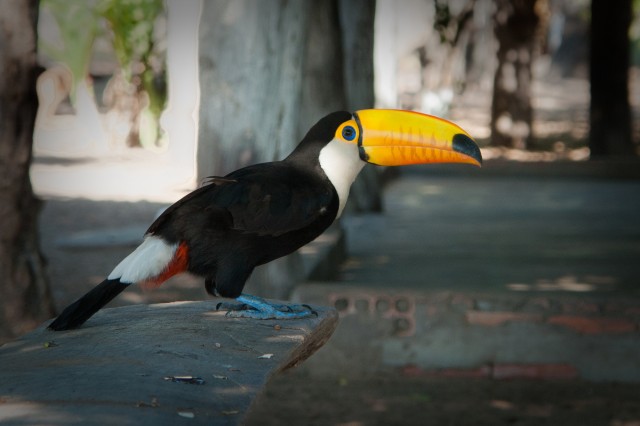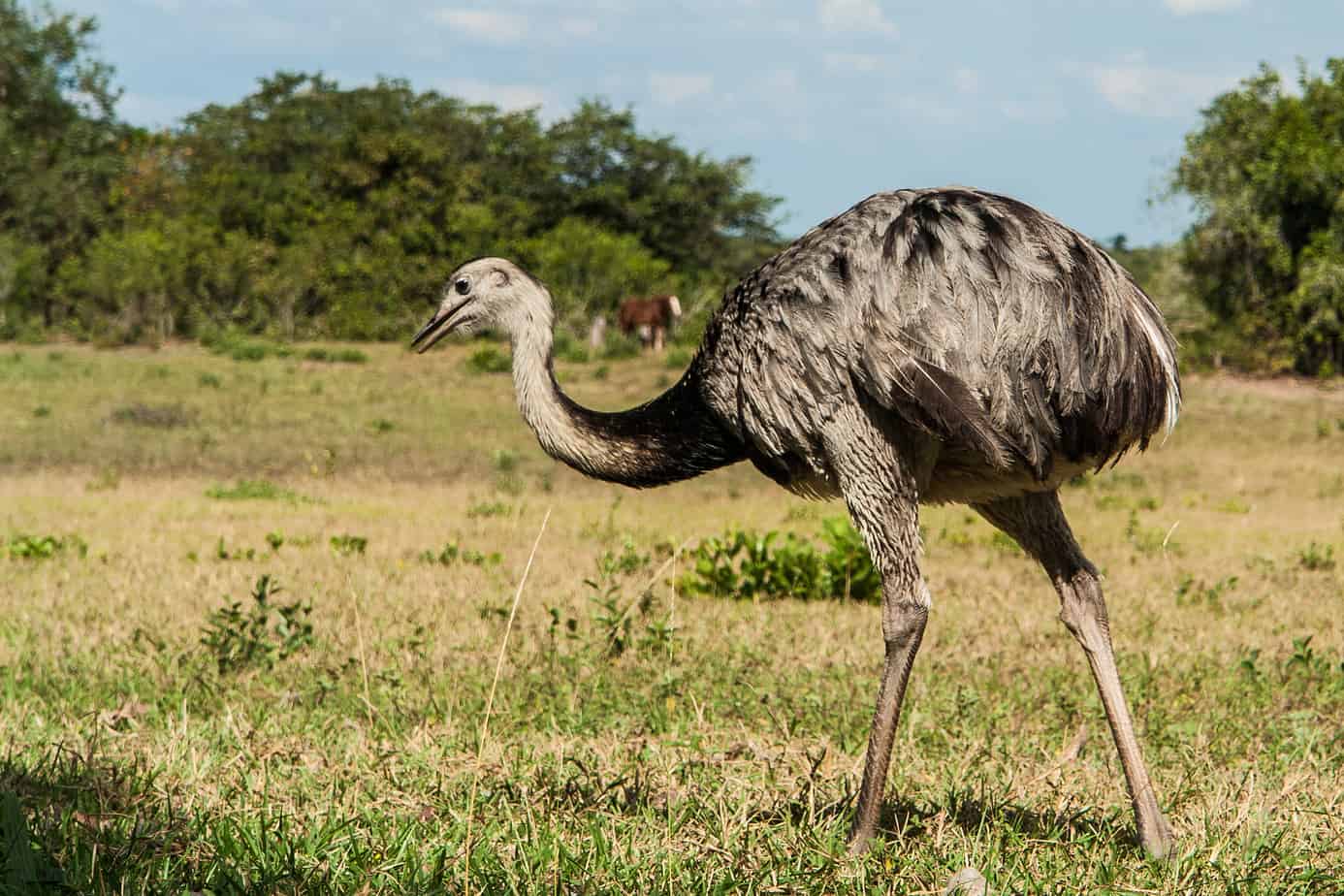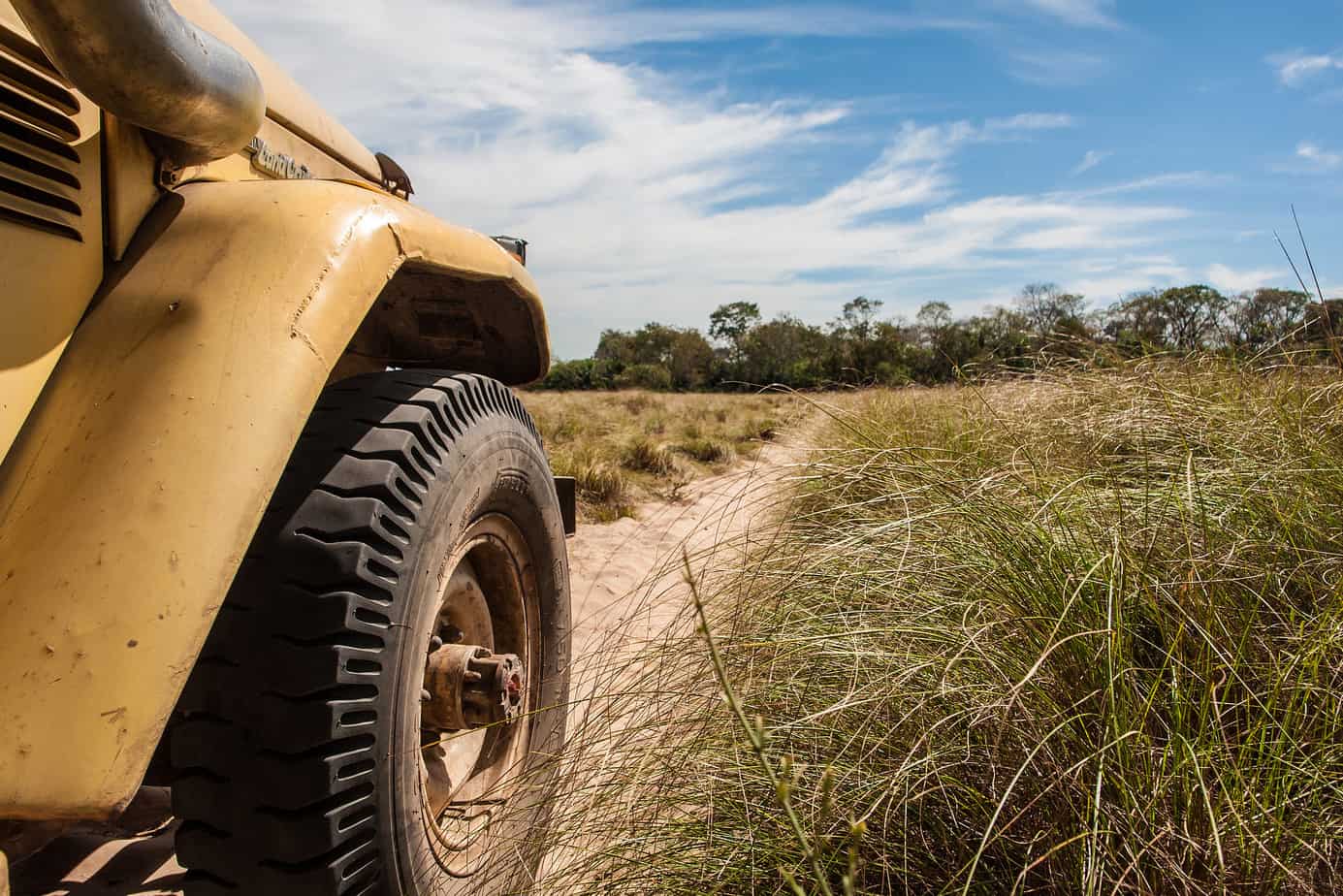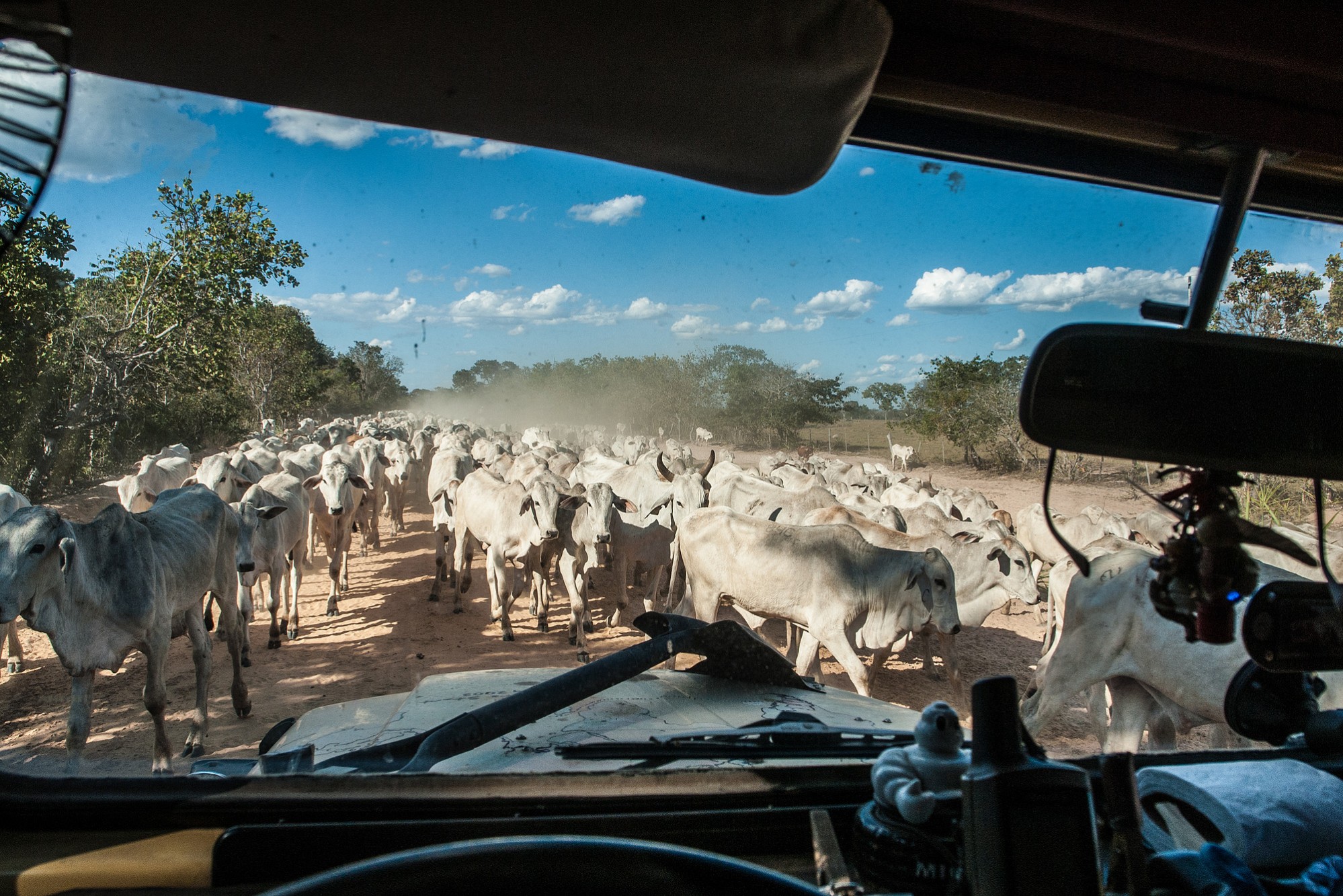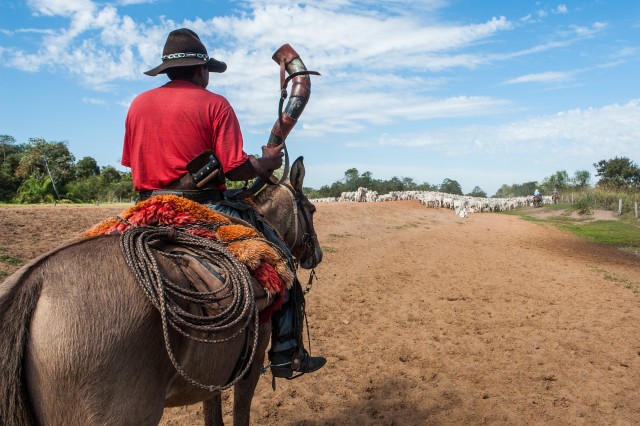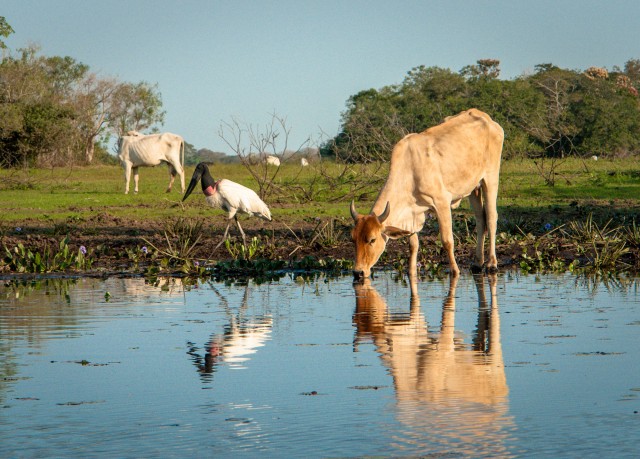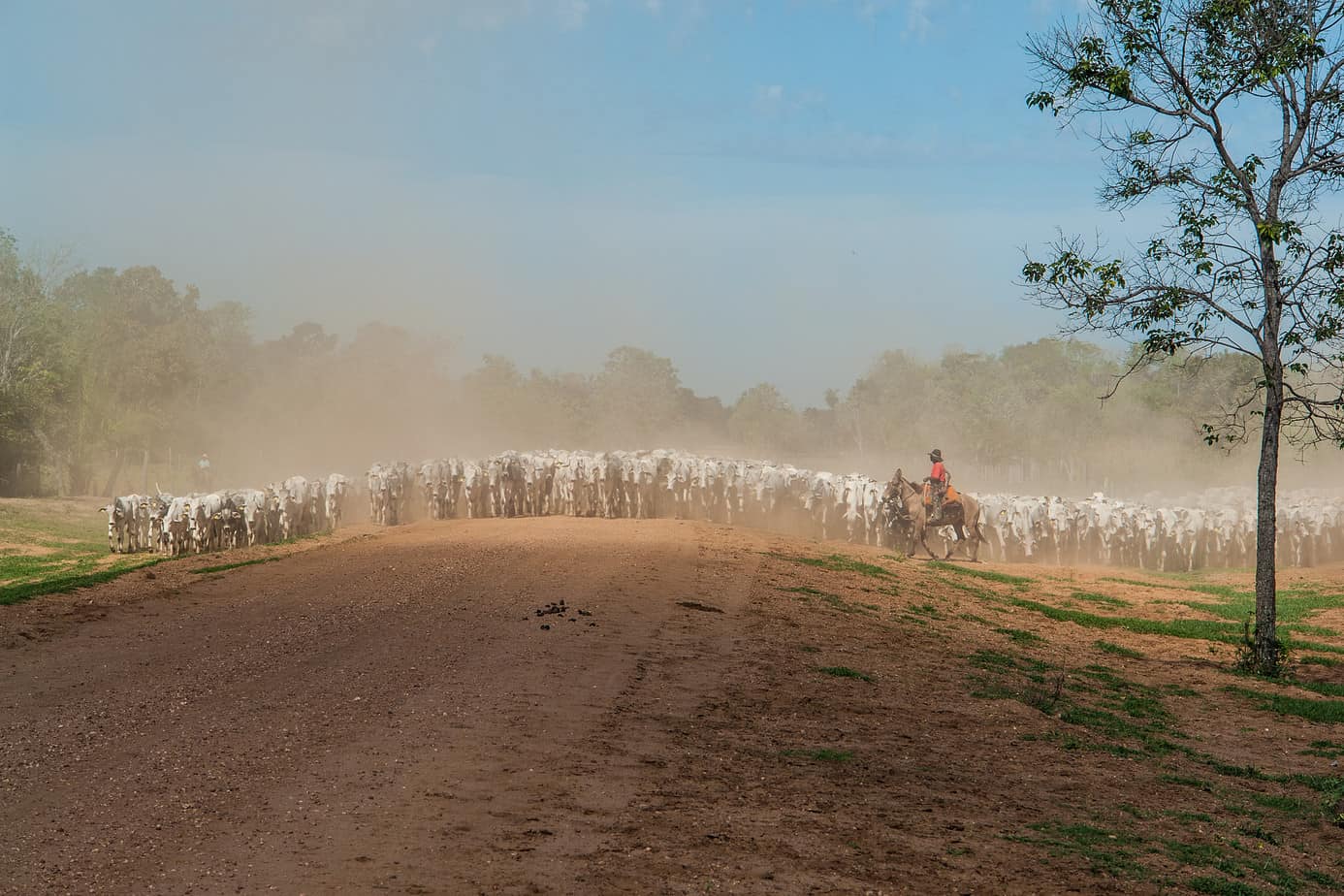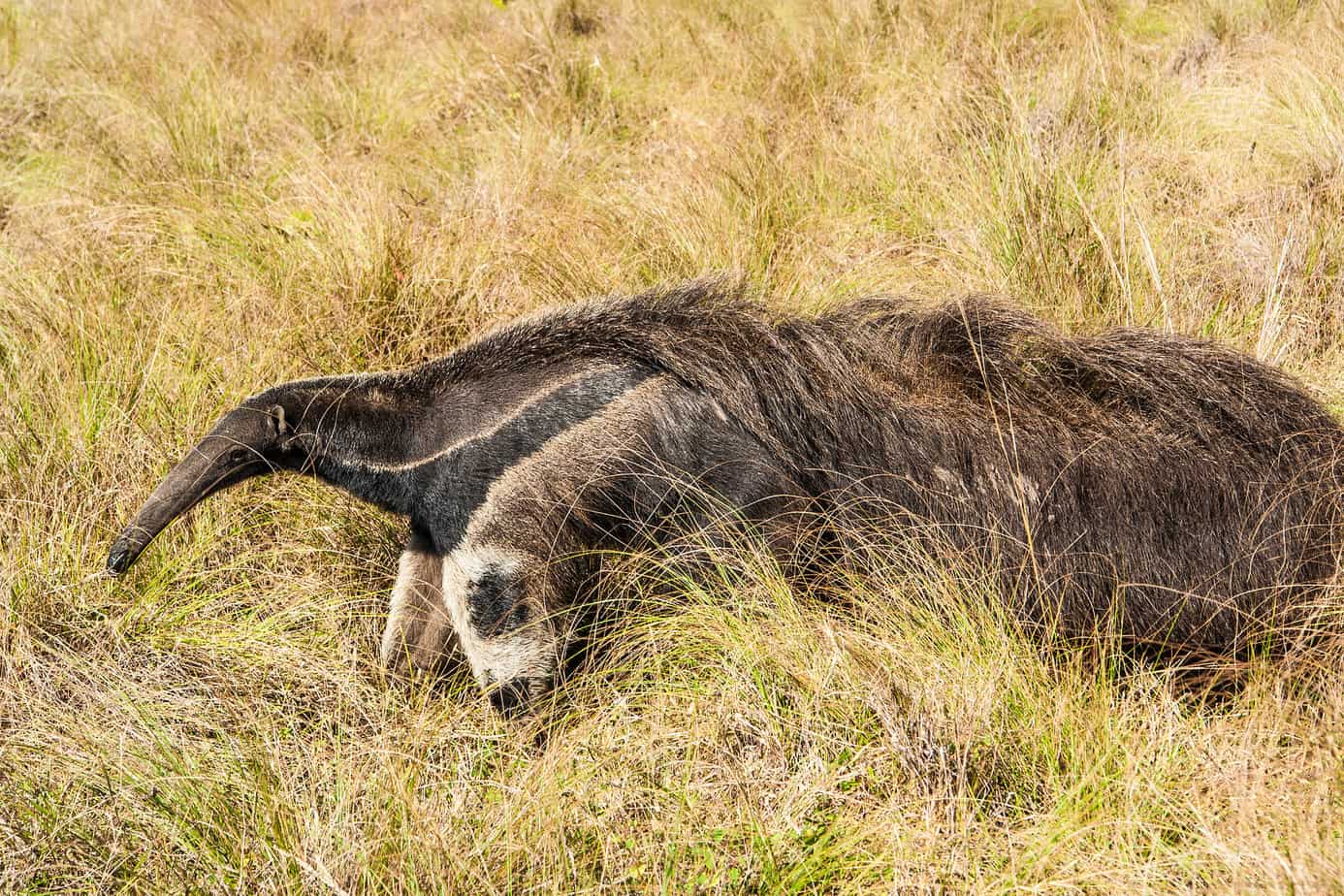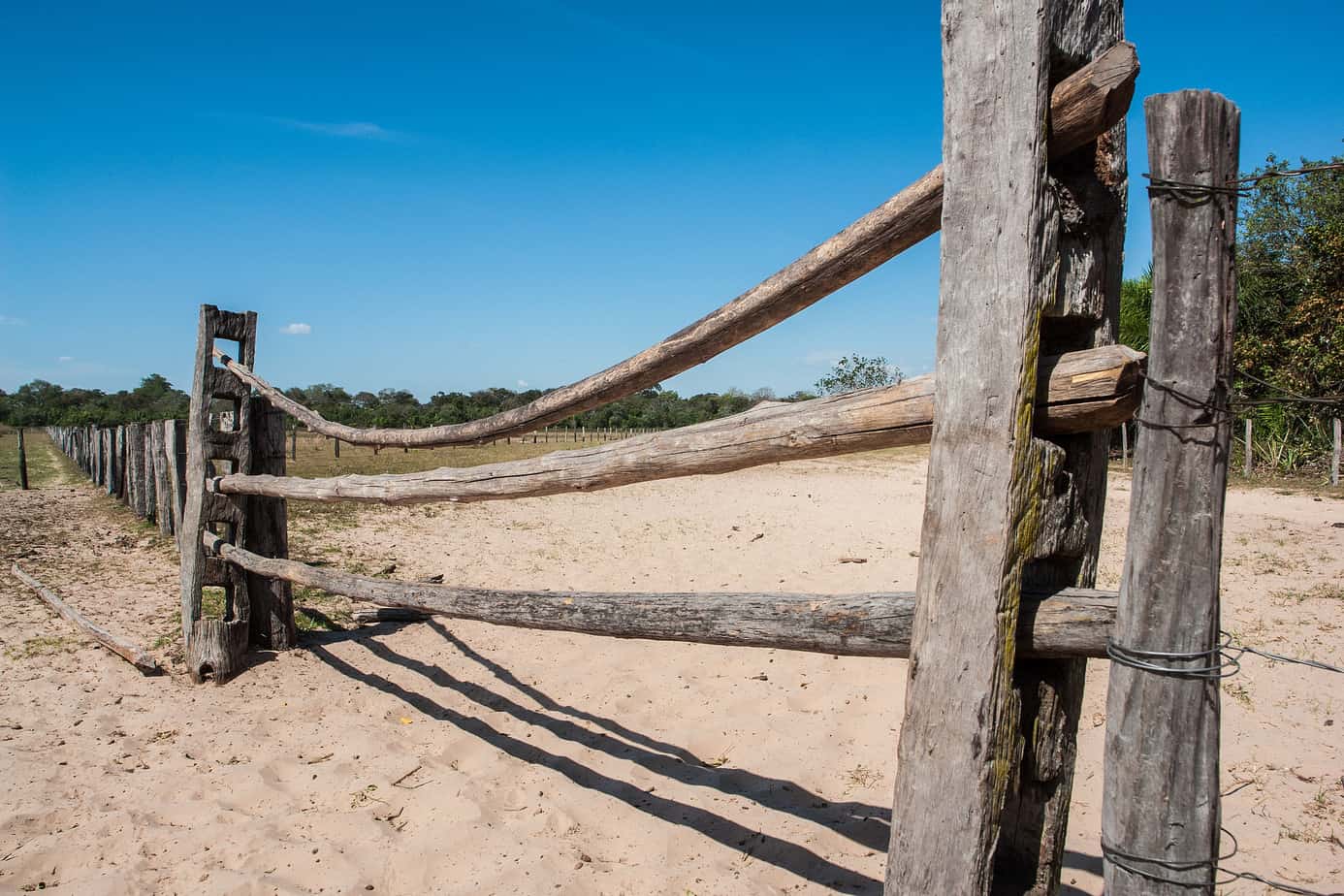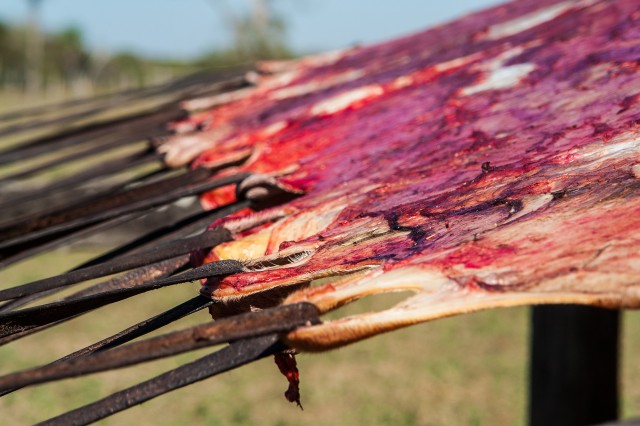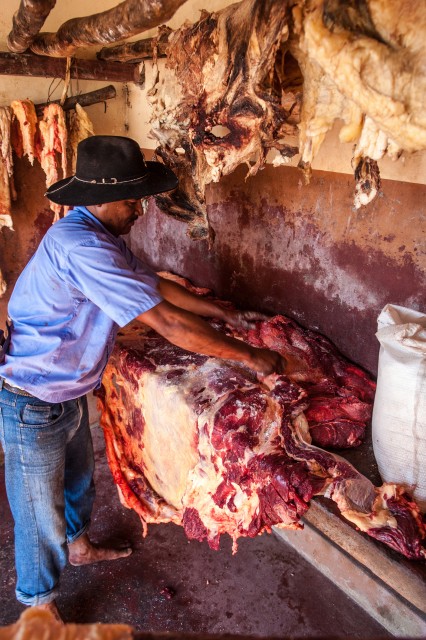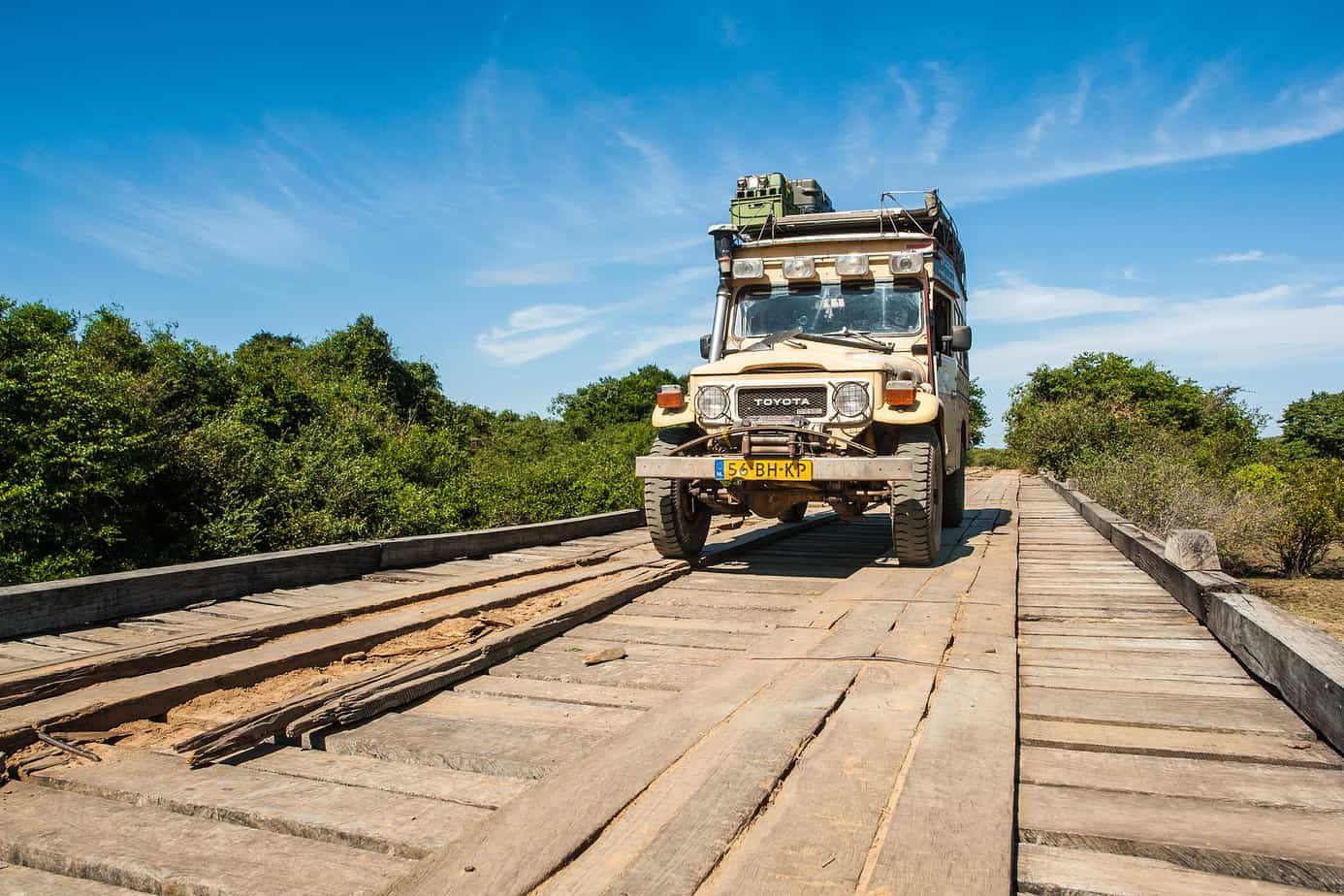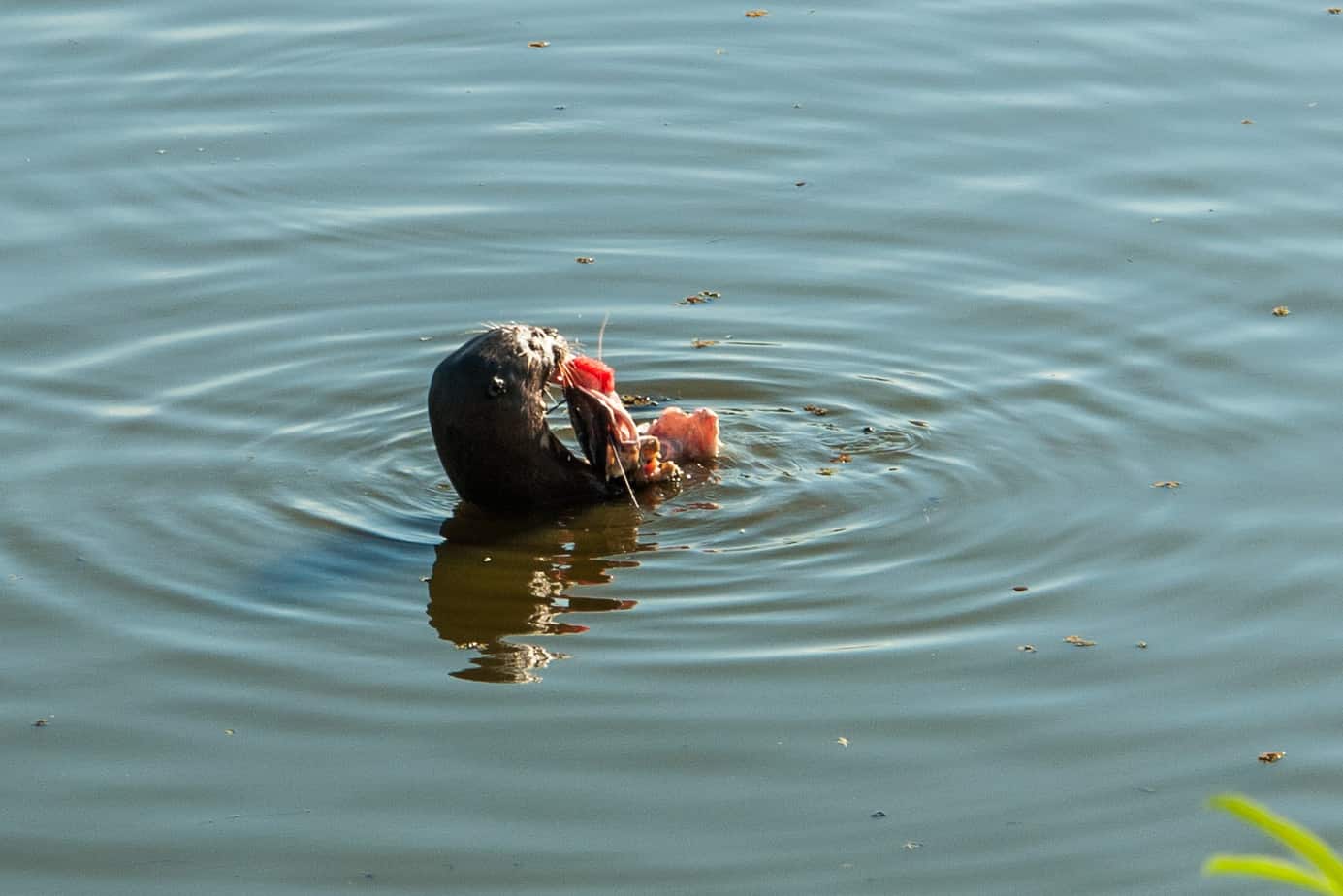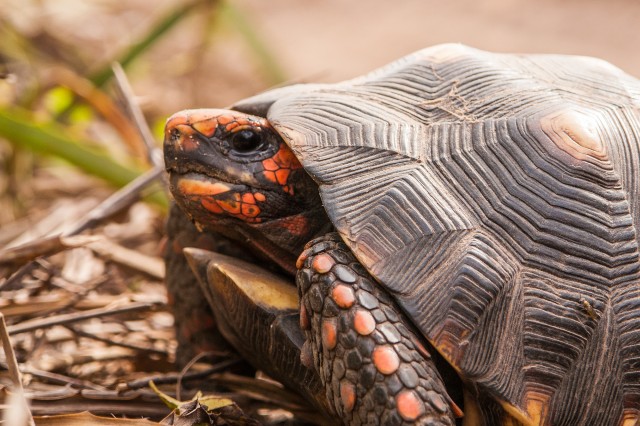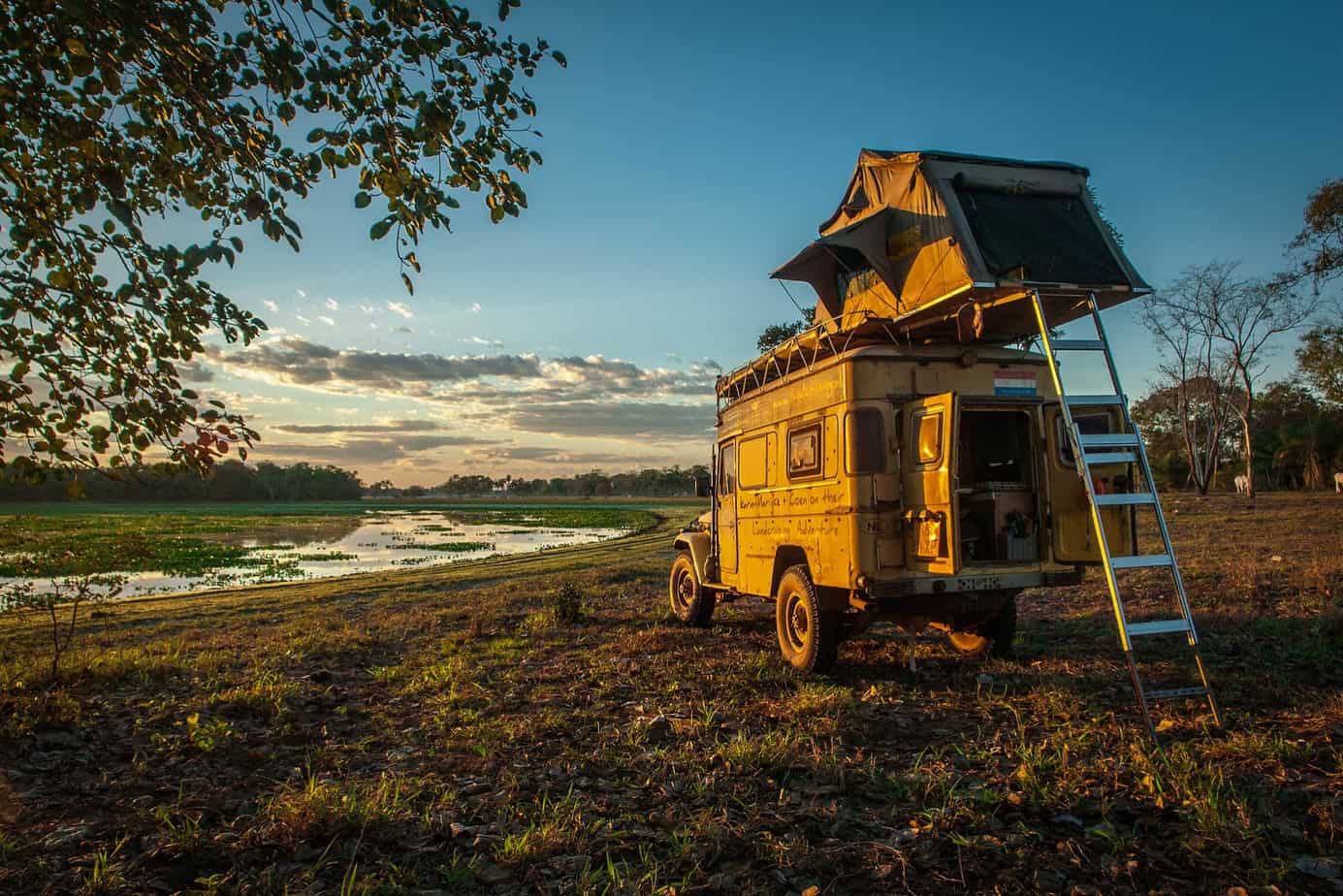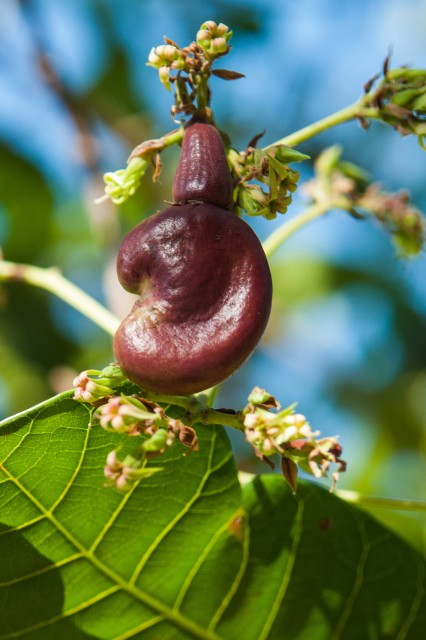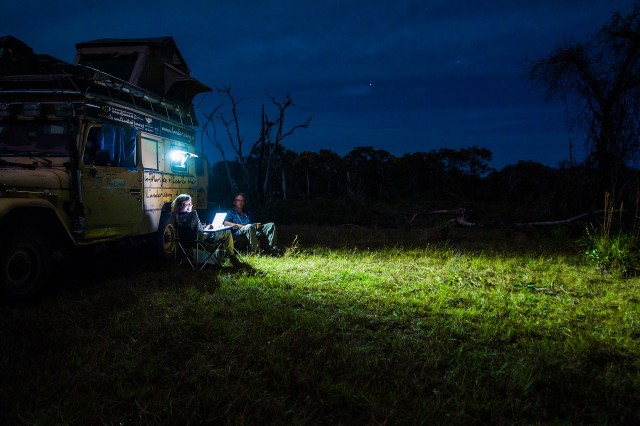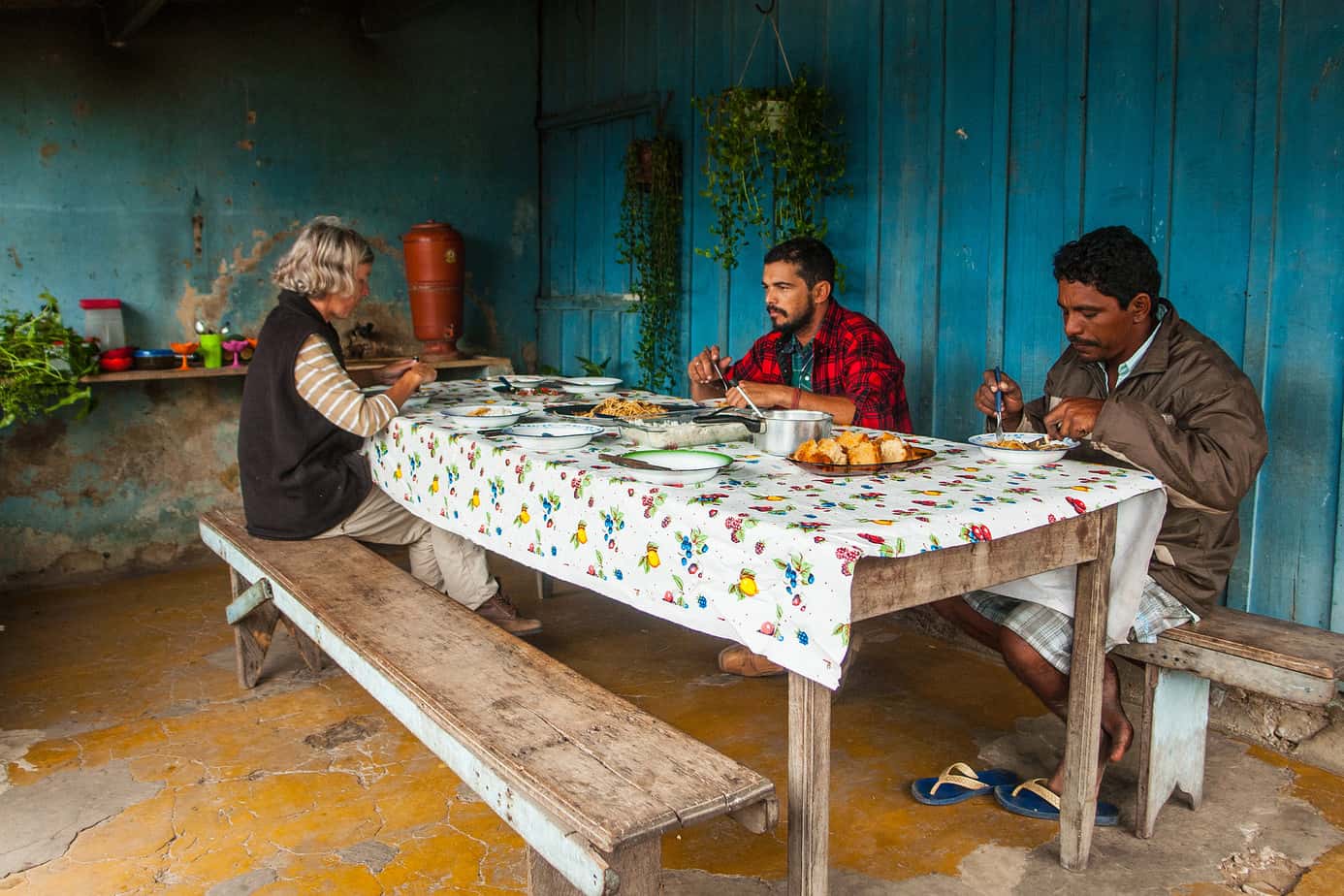During their nine-year overland journey in South America Coen and Karin-Marijke became so hooked on the Pantanal that they returned four times. After having driven and camped along the fringes it was time to drive deeper into its magnificent hinterland.
After an hour of fruitless trying piranhas were suddenly flying into the boat. We had hit a school of them and reeled in one after the other. Pablo carefully removed the hooks from the feisty, carnivorous fish. Their triangular teeth are notorious and have cost many an experienced fisherman in the Pantanal a fingertip.
Piranha do Pantanal
We paddled to the shore where we kindled a wood fire and scaled, gutted and sliced the piranhas in a cooking camp of pantaneiros (cowboys from the Pantanal). My eyes fell on a nearby beam in the water. It moved, too quickly. Two eyes were watching me.
“Pablo, a jacaré (caiman) is approaching us,” I stuttered. It stopped moving when it was a mere two meters away from us.
”Yes, I know. He wants something to eat as well.” Pablo pretended indifference but from the corner of my eye I saw that he studied the predator’s movements.
”Pablo, the jacaré is getting too close!”
“No, it isn’t. We’ll give him a piranha.” He put one on a long stick and extended it to the caiman. The jacaré wanted more but Pablo was hungry himself. “Tss. Go away!” he grunted, slapping the predator’s nose with his knife. Pablo grew up in this region and his diet has always included piranha. He knew exactly where to fish for it and how hungry the jacarés were.
Pablo rubbed a mixture of salt and garlic into the cuts along the side of the fish, sprinkled it with lime juice, covered it in flour and fried it in pork fat, emphasizing that this is what gives the piranha its delicious taste (“Don’t use sunflower oil!”). We guzzled the Piranha do Pantanal with rice and salad and felt fortunate to be here.
Routes to Visit the Pantanal
The Pantanal is a tropical swampland along the Paraguay River in southwest Brazil, and it is the best place on the South American continent to admire prodigious concentrations of fauna. Contrary to the Amazon, where you will hear wildlife but foliage often prevents you from spotting it, the Pantanal consists of open, flat lands. Especially in July / August, when the region is at its driest, you’re bound to catch wild animals gathered around the few remaining waterways, among which jacarés (caimans), capybaras (large-sized guinea pig type of animal), deer, all kinds of waterfowl and birds of prey, coaties (raccoons), giant anteaters, giant otters, and the lucky ones will spot a jaguar (which we did on another occasion).
There are various ways of exploring the Pantanal. One is on the north side, coming from Curitiba and driving down the Transpantaneira, an unpaved, 150-kilometer stretch counting more than 100 bridges. The second is following the south rim, along the Estrada Parque, popular on the tourist trail with lots of guesthouses and organized tours. We had visited both sides and the third time I decided we’d drive beyond the south rim and head into the interior. This was a wholly different ball game and is not feasible for everybody.
For one, you need 4WD for some of the sandy stretches. Two, you need to be able to (sometimes) talk to farmers to ask for permission to cross their terrain or camp on it, and don’t expect them to speak any English. Third, it’s a physical exercise with relentless opening and closing of gates in the burning sun while walking in sifting sand with only flip flops, I learned the hard way, can cause nasty bugs to crawl under the skin of your toe nails or skin of your feet, called bichos de pe (lit; ‘fleas of foot’). But, if you’re the adventurous type, go for it.
Driving into the Heartland
We had driven across the undulating landscape of Campo Grande to the town of Aquidauana, where reddish boulders rose from the surface, as if someone had dumped a bunch of rocks from the sky. Here the first toucans flew in front of the Land Cruiser: imposing black birds with orange, red, yellow banana beaks. We spotted our first araras and were ecstatic: macaws, beautifully colored with blue-red, blue-yellow, or scarlet feathers. The latter is the king of the macaws, being the largest of the three, but it is threatened with extinction due to the illegal trade in tropical animals.
Beyond Aquidauana we hit unpaved, washboard trails where we came across 1200 cows and 3 pantaneiros. They sat high and proud on orange-colored saddlecloths, wearing sombreros. They raised their hands in greeting. The trail narrowed to a track. Where there was no track the Land Cruiser easily crawled through sandy stretches. We were leaving civilization and driving deeper into the wilderness. We zigzagged over red-earth tracks that may change location every year because the Pantanal gets flooded every year and existing trails are wiped out. During that time farmers can’t leave their homes unless they have a boat, or a plane, in the case of the more affluent who live on elevated grounds.
“Stop! Anteater!”
The giant anteater wandered deeper into the field, in search of termite mounds. I climbed on the Land Cruiser’s roof to follow its movements. We stood alongside some clusters of trees and Coen suggested to spend the night here. Within minutes we had set up camp and were sitting in our easy chairs, watching macaws fly past overhead. The trees were home to coaties (raccoons) and toucans. With the sunset illuminating the sky in fiery red and orange tones, a blue macaw couple settled in a tree next to us and with their shrieks wished us a good night’s sleep – or so we liked to believe.
Threats to the Pantanal
Before the morning was over I had opened and closed 30 gates. In the coming two weeks we would pass more than 200 of them. Between the gates stretched fields, sometimes empty, sometimes with white cows grazing on them. It sounds like a contradiction: farms and a panoply of wildlife. Yet that’s what the Pantanal is all about. For now.
Only a small portion of the region is protected as a national park (1380 square kilometers), while a large part has been transformed into cattle ranches. Here cows graze during their first nine months after which they are moved to richer pastures or CAFOs (Concentrated Animal Feeding Operations) in surrounding areas. Cattle raising has led to deforestation and slash-and-burn practices, destroying the Pantanal’s ecosystem.
Then there is the pollution from major, upriver cities like Cuiabá. Lacking a proper sewer system all sewage, as well as agrochemicals from farming and mercury from gold mining flow directly into the Pantanal’s water system. And, additionally, the Pantanal is under threat on account of the illegal trade in skins, fish and rare birds.
The Magnificent Isolation of the Pantanal
Our path zigzagged through a savanna-type of landscape where once in a while we spotted a fazenda (ranch). At one we checked for directions and were asked to join the pantaneiros for lunch: rice, beans and a piece of meat. Of course, we joined. At one gate my attention was drawn to two blue macaws that sat right above me in a tree. They shrieked, sharpened their beaks along branches, and cuddled. Macaws are affectionate animals and once they have found each other, they remain a couple for the rest of their lives. More macaws arrived. I counted nine! Then twelve! Then so many that I lost count. For an hour they kept us enthralled as they flew from one branch to the next, as if they were playing some kind of game. All of a sudden the show was over. They spread out to different destinations and the plains were once more dominated by silence.
In a lake we watched seven giant otters, which can grow as long as 2.5 meters. The animals made a penetrating, peeping sound and it was clear that they were aware of our presence. One had caught a pintado, a one-meter long fish. From all sides the otter was harassed by caimans that wanted a share of the catch, and the otter kept swimming away to find a quiet place to continue his meal. It was so crowded in the water – all animals hunting for a piece of the fish – that caimans and giant otters bumped into each other. On the shore caimans were warming themselves in the sun, only moving to chase otters away that wanted to get ashore as well.
Pantaneiros’ Hospitality
Fazenda 4 Cantos is situated in the heart of the Pantanal. We had met the manager, Pablo, earlier that week. “Come to my fazenda, and I’ll show you around!” he had offered after he had stopped his Bandeirante (the Brazilian version of the Toyota) to admire our vehicle and shake hands. Quatro Cantos was home to two toucans that were daily fed by Bilû, the housekeeper, who gave them bread soaked in milk.
The other pet was Philip, a giant anteater. He had been found two years earlier with no mother in sight. He loved taking a shower. In the wild anteaters take baths to lower their body temperature. While Pablo held the hose Philip scratched its body clean with his two powerful front claws, turned on his back to scrub his belly and carefully removed the dirt from his its tail. It was clear when Philip had had enough: he simply walked away.
Pablo did what he promised and we spent three fantastic days hiking and watching wildlife, fishing, and visiting neighboring fazendas where we shared traditional pantaneiro meals: rice with pieces of sun-dried meat and a stew of pork and manioc.
Feeling Rich
Back on the road we continued rough camping. One morning we had breakfast in the company of a herd of deer. I followed a couple of raccoons into a cluster of trees, which was one of the many almost perfectly round islands that seemed to be floating on an ocean of marram grass. The coaties pretended not to be at home and on my arrival it was dead quiet. But their curiosity got the better of them and suddenly one was staring down at me from the top of a palm tree. In coatie language he was informing his family members, “Walks on two legs, was here yesterday as well, flat face but friendly eyes.” When I talked to it, the raccoon was quiet and watched me intently. Family members appeared, all gazing down from treetops holding on to trunks and branches with tiny paws and perfectly manicured nails. It was a beautiful moment. I thanked them for their hospitality and continued my walk around the ‘island’. Five dark brown horses were grazing on the prairie and grey-yellow birds shrieked raucously when passing by. An eagle scanned the fields from the top of a leafless tree.
The sky was blue, the air fresh enough to wear a sweater while sitting in the sun. My scalp tingled with the heat of the sunrays, like a soft massage. It was ten o’clock in the morning. The sunrise jungle serenades were over, silence had returned to the prairie. Every once in a while macaw shrieks sounded from the forest. Horses and deer continued grazing in front of the Land Cruiser. The image evoked a feeling of peace. A moment of perfect silence and a deep feeling of contentment and happiness to be here.
Back to the Asphalted World
On the east side of the Pantanal we came across the first signs of urban life: a bridge, road signs, electricity poles. Six hundred cows and two pantaneiros passed the Land Cruiser and Coen stopped the engine, allowing us to take in the magnitude of this place one more time. When Coen took a picture of a pantaneiro, the man quickly put on his sunglasses, which had only one arm. He wanted to impress us and the gesture made me smile. A table mountain loomed into view; it felt strange to see a mountain after so much flat land. To the north, south and east the Pantanal is surrounded by hills (400 meters in altitude) and when looking down from the top, the Pantanal looks like a collapsed soufflé.
Coen drove thirty where he could easily have done fifty, postponing the moment of our return to civilization. But life goes on, so do we, and we couldn’t avoid the moment of passing a communication tower that truly signaled the end of our off-road journey. Behind us twittered birds, in front of us trucks and buses were racing along the highway. They produced a noise that after two and a half weeks of roaming around the Pantanal had become alien and disturbing. But then, after three mind-blowing trips, we could always come back for a fourth, couldn’t we? We would.
Read this article and many more at: [Click on the banner]


